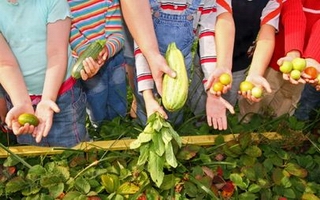 nd federal officials continue working to pinpoint the source of the June Cyclospora outbreak that sickened at least 275 people in the Midwest, one prominent epidemiologist has criticized the investigation’s speed and effectiveness.
nd federal officials continue working to pinpoint the source of the June Cyclospora outbreak that sickened at least 275 people in the Midwest, one prominent epidemiologist has criticized the investigation’s speed and effectiveness.Given the relatively large number of people sickened, the outbreak should have been solved “weeks ago,” according to Dr. Michael Osterholm, director of the Center for Infectious Disease Research and Policy (CIDRAP) at the University of Minnesota and former state epidemiologist of Minnesota.
Osterholm said that he fears investigators at the state and federal level are taking their time with the investigation because the outbreak appears to have ended. All of the reported illnesses began in mid-to-late June or the first days of July, suggesting that the cause of the outbreak was likely a fresh produce item that had since expired and is no longer on the market.
But Osterholm said that a lull in cases does not necessarily mean an outbreak doesn’t pose any more threat.
“We’ve had outbreaks in the past when a contaminated item comes out of the farm and it ends, but then a second product is harvested and causes additional illnesses,” he said.
Osterholm’s criticism highlights the difference in philosophies on epidemiological investigations when compared with the viewpoint of Iowa state epidemiologist Dr. Patricia Quinlisk, who said that officials in the affected states are working diligently to find the cause of the complex outbreak.
They have narrowed the likely source down to several vegetables, but they don’t want to risk identifying the wrong product, she said.
One of the biggest hurdles with this investigation, Quinlisk said, is that it’s an outbreak of Cyclospora, a pathogen with a relatively long incubation period of several days to two weeks. Because public health officials rely on meal history interviews to narrow down the suspected source, identifying a source gets increasingly difficult as time passes.
“There’s a great delay between the time people ate the food, got sick, took the time to go to the doctor, got the right laboratory tests performed and reported the infection,” Quinlisk said. “These exposures occurred in early June. If I asked you today what you ate on the 7th of June, you can sort of see the problem. People honestly just don’t remember.”
The other problem with Cyclospora is that it’s associated with fresh produce, and those who eat fresh produce often eat a wide variety of it — possibly in a salad — and not just one or two items. Quinlisk said it will be extremely difficult for investigators to narrow down their list of vegetables much farther, considering all items on it are eaten commonly, and sometimes together in the same meal.
Quinlisk said officials have also performed “cluster investigations,” comparing meal histories of groups of people who dined at the same restaurants or attended the same events around the window of exposure. Still, the investigation is coming up short.
Quinlisk hopes now that the U.S. Centers for Disease Control and Prevention can pool data from Iowa, Nebraska and Texas, the “power in numbers” approach might open up some new leads. Sometimes the epidemiology becomes clearer when investigators see regional eating patterns, she said.
Osterholm, however, said that the amount of time taken to solve the investigation “shouldn’t be tolerated.”
“I’m confident the source should and will be found and we should make sure more products from wherever it came from do not make it into the food system,” he said. “I’m not saying these things because I want to disparage or publicly disagree with any specific public health officials. But those of us who have spent a lifetime in public health can see when an investigation is languishing and not finding answers and it really does potentially pose risks to the public’s health.”
Quinlisk argued that coming out early and naming a possible product without tracing back its origin could harm the entire industry economically and cause unnecessary panic among consumers who weren’t at risk.
“We’re sure the contaminated product is no longer on the market,” Quinlisk said. “But if I were to go to the media and say that cucumbers were the source, even if I explicitly said it was only in June, people would stop eating cucumbers. We don’t want to say something that could be misunderstood or misrepresented.”





